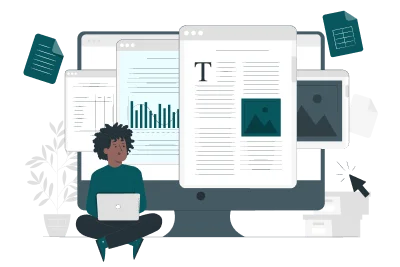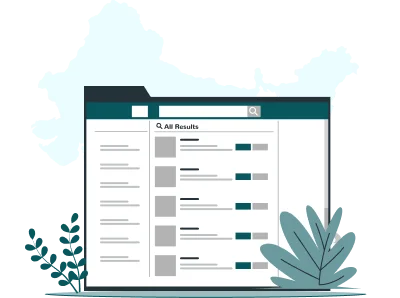Grab a chance to avail 6 Months of Performance Module for FREE
Book a free demo session & learn more about it!
-
Will customized solution for your needs
-
Empowering users with user-friendly features
-
Driving success across diverse industries, everywhere.
Grab a chance to avail 6 Months of Performance Module for FREE
Book a free demo session & learn more about it!
Superworks
Modern HR Workplace
Your Partner in the entire Employee Life Cycle
From recruitment to retirement manage every stage of employee lifecycle with ease.


Seamless onboarding & offboarding
Automated compliance & payroll
Track performance & engagement
A Guide to HR Document List: Perfect HR Management with HRMS Software
- hr document list
- 8 min read
- November 9, 2023

Human Resources (HR) management is a critical function in any organization. It involves various tasks, from recruiting and onboarding employees to managing payroll and ensuring compliance with labor laws. One of the essential aspects of HR management is the creation and maintenance of HR documents.
HR documents play a crucial role in keeping records, setting expectations, and ensuring legal compliance within an organization. In this blog, we’ll explore the world of HR documents, the significance they hold, and how HRMS (Human Resource Management System) software can streamline the process, with a specific focus on HRMS Software India.
What Is The Importance of HR Documents?
HR documents serve as the backbone of HR management. They provide a comprehensive record of an employee’s journey within the organization, from the moment they join to their exit. Here are some key reasons why HR documents are essential:
1. Legal Compliance:
HR documents help organizations adhere to labor laws, regulations, and industry standards. Having the necessary paperwork in place can protect the organization from legal disputes and penalties.
2. Employee Information:
HR documents store vital information about employees, including contact details, work history, performance evaluations, and benefits. This data is crucial for making informed HR decisions.
3. Communication:
Documents such as employee handbooks and policies set clear expectations for employees, promoting transparency and consistency across the organization.
4. Performance Management:
Performance appraisals and feedback records aid in assessing employee performance, identifying areas for improvement, and setting goals.
5. Termination and Exit:
When an employee leaves the company, termination documents ensure a smooth exit process, including the return of company property, final paychecks, and the handling of benefits.
Types of HR Documents
HR documents encompass a wide range of materials, each serving a specific purpose in the HR management process. Here are some common types of HR documents:
a. Employee Records
Employee Information Form: This document collects personal and professional details of employees, such as name, contact information, employment history, and emergency contacts.
Resume and Application Materials: These include the resumes, cover letters, and job application submitted by candidates during the hiring process.
b. Policies and Procedures
Employee Handbook: An employee handbook outlines company policies, procedures, and expectations. It serves as a reference guide for employees and helps maintain consistency in the workplace.
Code of Conduct: This document establishes the ethical standards and behavior expected from employees.
c. Employment Contracts
Offer Letter: The offer letter extends a formal job offer to a candidate, specifying terms and conditions of employment, including compensation, benefits, and employment status.
Employment Agreement: In some cases, organizations may use employment agreements, which outline specific terms and conditions beyond what’s covered in the offer letter.
d. Payroll and Benefits
Payroll Register: This document tracks employee compensation, deductions, and taxes. It is essential for accurate payroll processing and tax compliance.
Benefit Enrollment Forms: Employees use these forms to select and enroll in company benefits such as health insurance, retirement plans, and stock options.
e. Performance Management
Performance Appraisal Form: Performance appraisal forms are used to assess employee performance, provide feedback, and set goals for improvement or career development.
Training and Development Records: These documents track employee training, certifications, and professional development activities.
f. Termination and Exit Documents
Termination Letter: Termination letter formally communicates the end of an employee’s tenure with the organization. It may include details about severance pay and return of company property.
Exit Interview Form: Exit interviews gather feedback from departing employees, helping the organization identify areas for improvement and reduce turnover.

Want free HR document download list? – Get from Superworks!
Superworks has all kinds of HR documents and you can directly get them from us.No worry from now onward just make your journey more impressive.
HR letters, HR policies, HR emails, HR forms, and many other things are waiting for you. Get from Superworks for free.
The Role of HRMS Software
As organizations grow, the volume of HR documents can become overwhelming. Managing these documents manually is time-consuming, prone to errors, and can lead to compliance issues.
This is where HRMS software comes to the rescue. Superworks-HRMS software is designed to streamline HR management by automating document creation, storage, and retrieval. It offers a centralized platform where HR professionals can manage all aspects of HR documentation efficiently. Some key features and roles of HRMS software include:
Document Storage: HRMS software provides a secure digital repository for all HR documents, eliminating the need for physical paperwork and reducing the risk of document loss or damage.
Document Templates: It offers pre-designed templates for various HR documents, ensuring consistency and saving time in document creation.
Data Entry and Retrieval: HRMS software allows for easy input of employee data and swift retrieval of documents when needed.
Compliance Monitoring: It helps track and ensure compliance with labor laws and regulations by providing alerts and reminders for document updates and renewals.
Access Control: HRMS software allows HR managers to control who can access and edit HR documents, ensuring data security and privacy.
Reporting and Analytics: It provides insights into HR data, enabling better decision-making and strategic Human Resource Planning.
Read more : A Beginner’s Guide to HR Documentation Process!
Benefits of HRMS Software in India
HRMS software is gaining popularity in India’s evolving HR landscape due to its numerous advantages:
Efficiency: HRMS software reduces manual paperwork, allowing HR professionals to focus on strategic tasks rather than administrative work.
Accuracy: Automation minimizes errors in data entry and document creation, leading to more accurate records.
Cost Savings: Going paperless and automating HR processes can lead to significant cost savings in the long run.
Compliance: HRMS software helps Indian organizations stay compliant with the ever-changing labor laws and regulations.
Remote Access: With the rise of remote work, HRMS software allows for easy access to HR documents from anywhere, promoting flexibility and efficiency.
Scalability: As companies grow, HRMS software can scale to accommodate increasing document volumes and organizational complexity.
Creating Effective HR Documents
Whether you’re using HRMS software or not, creating effective HR documents is essential for efficient HR management. Here are some best practices to keep in mind:
a. Clarity and Consistency
Ensure that HR documents are clear, concise, and easy to understand, particularly in the context of Remote Employee Monitoring. Use plain language and avoid jargon. Consistency in formatting and language across documents is vital for professionalism and clarity.
b. Legal Compliance
Stay updated with local and national labor laws and regulations, especially in India’s dynamic legal landscape. Ensure that your HR documents are compliant and regularly reviewed for changes.
c. Accessibility
HR documents should be easily accessible to authorized personnel. Whether in physical or digital form, ensure that employees can access the information they need when necessary.
d. Version Control
Maintain proper version control for HR documents to avoid confusion or reliance on outdated information. Clearly label and date documents, and archive old versions as needed.
e. Data Security
Protect sensitive employee information by implementing robust data security measures, both in physical storage and digital systems. Ensure that access to confidential documents is restricted to authorized individuals.
HR Documentation Best Practices
In addition to document creation, here are some general documentation in HR best practices to follow:
Consistent Filing System: Establish a clear and consistent filing system for physical and digital documents, making retrieval and organization seamless.
Regular Audits: Conduct periodic audits of your HR documents to ensure they are up-to-date and comply with current regulations.
Employee Training: Train HR staff and employees on document management protocols and the use of HRMS software if applicable.
Backup and Disaster Recovery: Implement robust backup and disaster recovery procedures to protect HR documents from loss or damage.
Retention Policies: Develop and enforce document retention policies, specifying how long different types of documents should be kept.
The Free HR Toolkit: Sample HR Documents For You
To help you get started with creating your HR documents, here are some sample templates that you can use or customize as per your organization’s needs:
For organizations looking to kickstart their HR documentation efforts or enhance their existing processes, consider exploring free HR toolkits available online.
These toolkits often provide templates, guides, and resources to assist with HR documentation tasks.
While the specific contents may vary, here are some common items you can expect to find in a free HR toolkit:
-
Sample HR document templates (such as those mentioned earlier).
-
Guidelines for HR document creation and management in blogs.
-
HR letters & HR forms for all.
-
HR policies and HR emails.
-
Job descriptions for the HR or recruiters.
Utilizing a free HR toolkit can be an excellent starting point for organizations without dedicated HR resources or comprehensive HRMS solutions.
Conclusion
In the world of HR management, the significance of HR documents cannot be overstated. These documents are the backbone of HR operations, ensuring legal compliance, fostering transparency, and facilitating effective communication within organizations. With the advent of HRMS software, the process of creating, storing, and managing HR documents has become more efficient and reliable, especially in a dynamic environment like India.
By following best practices for document creation, staying compliant with local labor laws, and utilizing available resources like free HR toolkits, organizations can streamline their HR documentation processes and focus on strategic HR project management, ultimately contributing to the success of their employees and the organization as a whole.
Also see: employee application for leave





